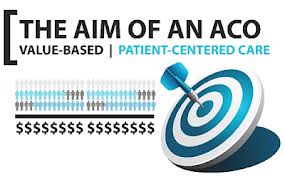A new article in Health Affairs brings attention to the problem of “churning” in the eligibility requirements for subsidized ObamaCare. The study by Benjamin Sommers and Sara Rosenbaum looks at how often people will fall in and out of eligibility for, on one hand, Medicaid for people up to 133% of the poverty level, and on the other hand, subsidized coverage for those up to 400% of poverty in the Exchange. The Washington bureaucracy simply doesn’t understand how dynamic America is. It assumes that people will stay in the box they are put in. But in fact, the job market in this country is extremely fluid, with people changing jobs frequently, or working several jobs at once, or supplementing income with seasonal jobs, or working on a commission basis and getting periodic surges of income.You don’t have to be a rocket scientist to understand this. It is interesting to look at the annual income statement I get from Social Security. In one year I made $120,000, in the next I made $0 — that is zero, nada, zilch, zippo. But peering out from the safety of the bureaucracy, policy makers assume that everyone is like them — except of course for those poor unfortunates who would starve to death but for the benevolence of federal programs. In fact, Sommers and Rosenbaum find frequent changes in income, both up and down, which puts people out of eligibility for a few months, and back in for a few more months. Specifically, they found of the people who started out below 133% of poverty:
Nearly 40 percent of adults experienced a disruption in Medicaid eligibility within the first six months. After a year, 38 percent were no longer eligible, and an additional 16 percent had lost eligibility but then regained it (churning). By three years, 47 percent of adults had incomes above the 133 percent cutoff, and an additional 30 percent of adults were below the cutoff but had experienced at least one episode of churning. By the end of the study period at four years, only 19 percent of adults would have been continuously eligible for Medicaid.
And for those between 133% and 200% of poverty (they did not look at people up to 400%), they found:
Within six months, nearly 30 percent of adults would have experienced a disruption in exchange eligibility. After a year, 24 percent were no longer eligible, and an additional 19 percent had lost eligibility but then regained it. By three years, 24 percent of adults were no longer eligible, and an additional 40 percent had lost eligibility but regained it after churning. By four years, only 31 percent of adults would have been continuously eligible for exchange subsidies.
This is especially problematic, because recipients of subsidies will be required to pay them back if they lose eligibility during the course of the year. Originally the law capped the amount of pay-back at $400. But to pay for last year’s SGR fix, Congress upped that to as high as $2,500. This is not small change to a lower income family. There are other problems as well. Switching between Medicaid and the Exchange is not just a matter of changing the amount of subsidy. They are entirely different insurance programs with different benefits, provider networks, and procedures. Continuity of care will be lost and confusion will reign. And as the authors write:
… many of these people will often have incomes low enough to exempt them from the federal insurance mandate, which means that fatigue with frequent coverage changes may lead them to simply stop signing up for insurance over time.
Indeed, we already know that some one-third of the uninsured are currently eligible for free Medicaid. Eligibility is fairly straightforward, but people still can’t be troubled to enroll. Once the complexity of this shifting eligibility kicks in, even fewer people are likely to enroll. The dream of adding 32 million more people to the insurance rolls mostly due to expanded Medicaid is likely to be a mirage.





